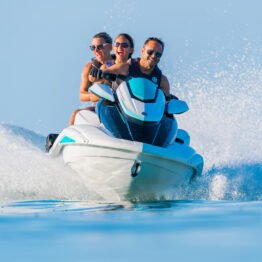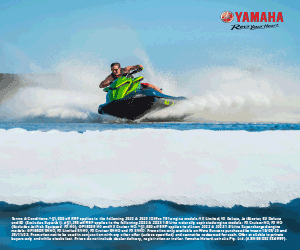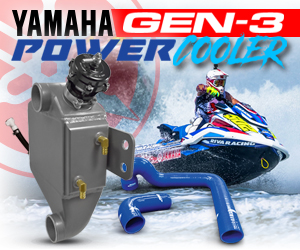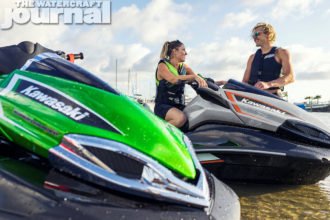
It seems like everything is becoming political these days. Every big box store, shoe maker, brewery and entertainer feels compelled to voice their stance on one topic or another; and all too often to the chagrin of their customers. Even the relatively intimate personal watercraft industry is not immune. In recent years, the Yamaha Motor Company has made more outward moves into the political arena than any other OE manufacturer, leading many to wonder what is the driving force behind it all.
More significant are the implications behind developing websites, producing videos and unique web content that focuses less on Yamaha’s products and more on global socio-environmental issues. These all require a considerable investment of capital. Even politically charged social media posts have their cost. So what would drive a motorsports manufacturer to commit millions of dollars into extraordinarily expensive non-endemic ventures?
It’s important to note that while not alone in doing so, Yamaha has been the most public – making them the proverbial “canary in the coalmine” from which we can study. This article intends to observe what positions Yamaha has taken, reveal Yamaha’s intent to participate in a global agenda as outlined by the Paris Agreement on climate change, and the UN’s Sustainable Development Goals (SDGs), and detail what these positions imply for future products.
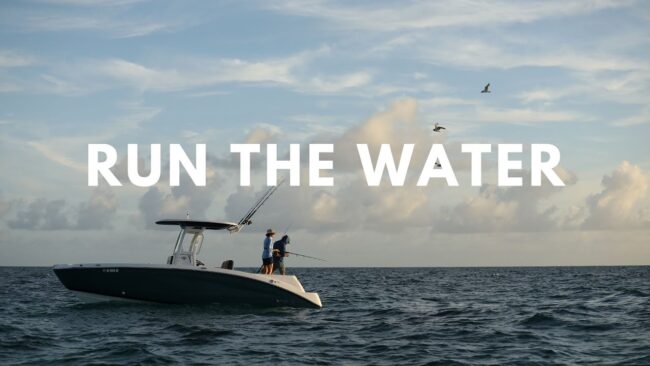
Establishing a Pattern
On October 28th, 2021, Yamaha released “Above & Below” as part of its then-new Run The Water video series. Shot in a documentary-style, both the first and second chapter – “The World’s Aquarium” (published August 1st, 2022) – carried a strong conservationist message while following professional divers and sea life photographers, respectively.
This wasn’t surprising. Yamaha has been active in conservationist efforts for decades through its Rightwaters campaign. Demonstrating its “long-standing dedication to preserving the natural resources we have today so that our customers can continue to enjoy them tomorrow,” Yamaha participates in beach cleanups, sponsors wildlife courses and actively seeks to streamline its manufacturing processes.
On December 1st, 2022, Yamaha launched Women Run The Water, a website dedicated to “a movement that encourages and supports women who want to take control of their boating or personal watercraft experience. […] We’re changing the way women spend their time as they break away from conventions.”

At the time, consumers didn’t know what to make of it; some panned the launch as a mere marketing contrivance to reach a budding customer demographic and a method to sell additional apparel. Others noted that the financial investment to launch such an endeavor appeared to far outweigh the potential for sales, raising eyebrows.
As of this writing, the video announcing Women Run The Water has 1,787 views despite the manufacturer’s vast global audience of enthusiasts; a surprisingly poor response. The statistic Yamaha used to ignite Women Run The Water stems from the National Marine Manufacturers Association (NMMA) which stated that an all-time high of 17.9 million women “enjoy boating and fishing” in the US.
In discussing the Women campaign with The Watercraft Journal, a leading Florida powersports dealer estimated that 95% of annual watercraft sales are made by men. Calculating that 50% of adult American men are unmarried, we’re looking at roughly 47.5% of the total purchasing decisions being made by single men without any female input. So why, the dealer representative queried, would Yamaha focus on 5% of the market instead of this consistent 47.5 percentile?

Then, in a March 8th post to its Facebook account celebrating International Women’s Day, Yamaha wrote: “It’s not just about being the captain but having the power to choose. By empowering women around the world to take charge of their destiny, we are setting the stage for an exciting future.” [emphasis added] Many across social media noted the peculiar word choice and ill-timing, wondering if Yamaha had made a veiled pro-abortion post only weeks after the SCOTUS overturned the 1973 Roe v. Wade decision.
This led fans to wonder had Yamaha gone woke? Anheuser-Busch (ie. Bud Light) and Target are currently experiencing apocalyptic boycotts, plummeting 25% in sales and losing over $15 billion in stock value, respectively. Surely, Yamaha wouldn’t follow. Right? After a month’s investigation, it became apparent that not only has Yamaha been actively engaged in domestic and global sociopolitical issues, but has openly announced its intent to do so in a document titled, “Yamaha Motor Group Environmental Plan 2050.”
In its introduction the document states that Yamaha is expected “by the international society” to “proactively undertake Environmental, Social, and Governance (ESG) issues, such as the signing of the Paris Agreement on climate change, and the UN’s Sustainable Development Goals (SDGs)” declaring, “Going forward, Yamaha Motor will continue aiming for [the] achievement of a sustainable society. As a company that proactively addresses ESG issues, we established the Yamaha Motor Group Environmental Plan 2050.” [emphasis added]

Proactively Addressing ESG Issues
No doubt you’ve heard the acronym “ESG” being tossed around, but what is it? According to the Corporate Finance Institute (a subsidiary of investment juggernaut BlackRock), “An ESG score is an objective measurement or evaluation of a given company, fund, or security’s performance with respect to Environmental, Social, and Governance (ESG) issues.”
This score can be raised (or lowered) by a company’s “percentage of employees per employee category, by age group, gender and other indicators of diversity (e.g. ethnicity)” or efforts towards “environmental issues like carbon emissions, climate change, water, and forestry.”
Companies are graded on the diversity of its staff, and the strides it makes to better society and/or the environment by independent finance and investment firms, consulting groups, standard-setting bodies, non-governmental organizations (NGO), and government agencies.

Image: Gensler
Companies with positive ESG scores may be rewarded with favorable financing rates, loans and tax incentives. And conversely, low scores can result in the inverse. That is to say that under this model, it is in the best interests of any company to make overt gestures demonstrating its compliance, or face severe financial repercussions.
Thus far, Yamaha’s Women Run The Water campaign and its International Women’s Day post works towards the company’s Gender Equality requirement (Goal #5 of UN’s Sustainable Development Goals). Equally, its Rightwater effort manages to tick two of the UN’s SDG’s, namely Climate Action & Life Below the Water. While none of these satisfy the Department of Economic and Social Affairs’ demands, they do show effort.
Within its Environmental Plan 2050, Yamaha outlines sweeping goals of reducing CO2 emissions by 90% from all products; promote recycling; strengthen environmental conservation and biodiversity; reduce waste materials; eradicate forced labor, human trafficking, and child labor; increase employment for socially vulnerable people; curtail corruption and bribery; promote safe and secure work environments; advance diversity and inclusion; and eliminate discrimination against women/protection of human rights (just to name a few).
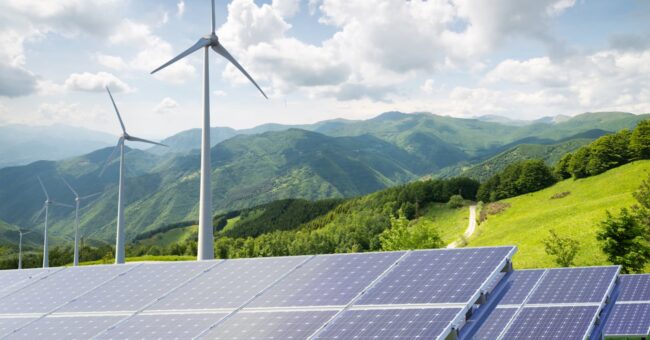
Becoming Carbon Neutral by 2050
While introducing the new microphone system [a technology allowing riders to vocally activate their synced phone’s AI and place a phone call] at the media reveal of the 2022 models, Yamaha WaveRunner Product Manager Martino Ruggiero said to those present, “[Customers] don’t care about performance anymore. They’re asking for better fuel mileage and features like smartphone integration.”
This sent those of us present reeling. Our instinctual reaction was to become defensive of the performance community and advocate its validity. But Ruggiero’s words had far, far greater implications that none of us immediately grasped. He hadn’t made a declaration but rather a veiled caution of things to come.
Employees involved with product development work on multiple projects simultaneously. While yes, they’re engaged with testing and troubleshooting of current products, they’re also working on vehicles five years ahead of what we the public will see. While the public anticipates the yet-to-be-revealed 2024 WaveRunners, they’re preparing for the 2030 models.

The Environmental Plan 2050 details how the Yamaha Motor Group will achieve carbon neutrality by 2050: primarily through radically improving the fuel efficiency of its internal combustion (ICE) powertrains; expand its battery electric vehicles (BEV) offerings; and develop new diversely-powered CN powertrains (hydrogen, biofuel, and synthetic liquid fuels, which are derived from renewable energy sources).
Equally, Yamaha seeks to reduce CO2 emissions from its manufacturing process with a goal of achieving carbon neutrality in 2035. This is achievable through reducing CO2 emissions generated during production and logistics (transportation). Additional actions include the further recycling of materials; greater support of environmental initiatives and conservatism; and increased “compliance with environmental laws and regulations.”
As outlined in the plan, Yamaha is actively redesigning its naturally-aspirated ICE engines for greater efficiency and lowered emissions. Simultaneously, Yamaha is expanding its lineup of electrified scooters, mobility vehicles and motorcycles. [Note: full electric powertrains are ranked as the most desirable (over hybrid HEV and FCV) by the United Nations Environment Programme (UNEP). -Ed.]
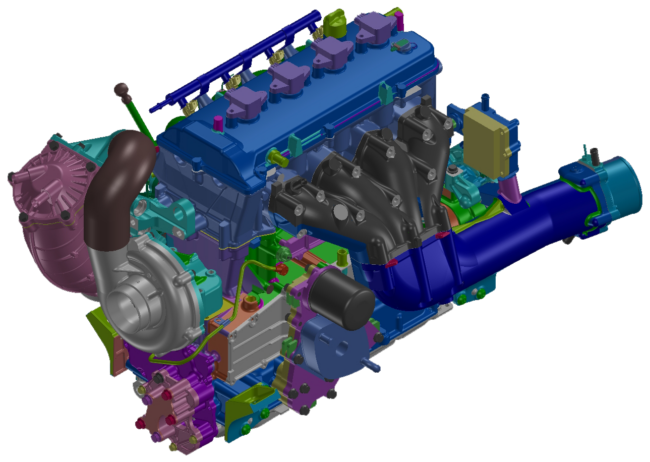
Per the goals outlined, all supercharged ICE applications are expected to be phased out by 2030 as total CO2 emissions are set to be cut by 24% (over its 2010 emissions output) and by 38% in 2035. By 2035, the entire lineup must reach a minimum of a 38% reduction over 2010’s emissions with an optimal goal of complete carbon neutrality. And by 2050, all Yamaha vehicles will be carbon neutral. No ifs, ands, or buts.
As noted previously, Yamaha is developing electric applications for two- and four-wheeled vehicles. They’re not alone in this effort as both Can-Am (BRP) and Kawasaki have released electric on- and off-road motorcycles, which has aided in lowering each brand’s Corporate Average Fuel Economy (CAFE) rating [more on that in a second – Ed.]. Thankfully, don’t expect Yamaha boats and WaveRunners to go electric anytime soon.
In a very clever bit of phrasing, the plan details that the electrification of both outboard and marine engines will only happen as “the spread of the infrastructure for the supply of renewable energy as well as the suitability level of a country or region’s usage environment, the roll out of electrified models is carried out sequentially beginning with industrialized countries” meaning we’ll go electric only when the global infrastructure can handle it.

Image: Edge Hill University
The UN Climate Change Conference & Federal Emissions Regulations
Per the United Nations Framework Convention on Climate Change (UNFCCC) website: The Paris Agreement is a legally binding international treaty on climate change. It was adopted by 196 Parties at the UN Climate Change Conference (COP21) in Paris, France, on 12 December 2015. It entered into force on 4 November 2016.
Many will recall that the USA dropped out of the “Paris Accord” in early 2017 under then-President Trump. Within days after his inauguration, current President Biden signed an executive order quickly re-adopting the accord in January 2021. This meant that not only the federal government of the United States of America fell under the treaty but all industries operating within would be required to follow suit.
These new regulations manifested most potently via the Environmental Protection Agency (EPA) and National Highway Traffic Safety Administration (NHTSA). Through these two agencies alone, environmentalists and political activists levied crushing fines and legal penalties upon vehicle manufacturers making continued operation seemingly untenable.
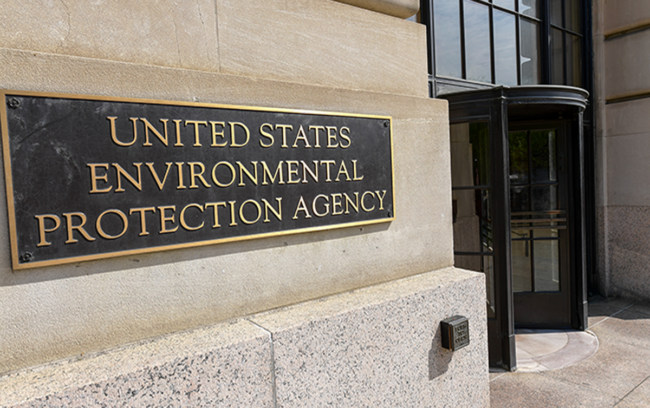
Image: Sierra Club
For example, in an article by automotive journalist, Patrick Rall, he explains how the NHTSA’s Corporate Average Fuel Economy (CAFE) program fines automakers who fail to reach specific goals set for fuel consumption and efficiency standards. Recently, Fiat Chrysler of America (FCA) was fined $392 million for failing to meet CAFE requirements for the 2016 through 2019 model years.
Per Rall, The fines for the 2016-2018 model years were issued at the rate of $5.50 per offending unit. For the 2019 model year, the rate climbed to $14 per offending unit. For the 2022 and 2023 model years, the fines rise again, to $15 per offending unit. With the same vehicle lineup, the automaker is all but guaranteed to face even larger fines for the 2020-2023 model years.
To stop the bleeding, Dodge is killing off the current Hemi-powered Challengers and Chargers, with a Charger EV expected to arrive for the 2024 model year. Doing away with the Hemi-powered Challengers and Chargers will help the company avoid more massive CAFE fines. Rall notes Dodge’s shift to smaller engines, hybrids, and electric vehicles for 2024 gives hope of staving off further penalties.
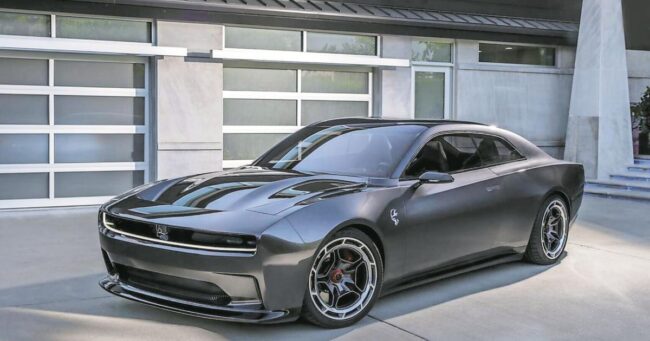
Thankfully, CAFE only pertains to light-duty cars. Right? Not so. On August 16, 2022, the NHTSA announced its intent to issue stricter regulations for passenger vehicles model years 2027 and above, as well as heavy-duty pickup trucks and vans model years 2029 and up. But what about personal watercraft? Where do they fall in? Although the NHTSA and CAFE don’t apply; the EPA does.
Currently, the Emission Standards for Nonroad Engines and Vehicles listed on the EPA’s website are surprisingly unchanged since 2016 – and for the most part, are rather forgiving. Under code EPA-420-B-16-026 “Marine Spark-Ignition Engines and Vehicles: Exhaust Emission Standards,” federal emissions requirements for personal watercraft and outboard engines haven’t changed since 2010.
Thus far, the ire of the EPA has not been sicced upon the lowly personal watercraft market. We see no agency requiring the three original equipment manufacturers – Kawasaki, Sea-Doo and Yamaha – to contort themselves to fit within some austere environmental box. But as stated at the introduction of the article, Yamaha Motor adopted the Paris Agreement and Environmental, Social, and Governance (ESG) scoring system on its own volition. But why?

Image: GettyImages
Always, Always, Always Follow The Money
Returning to the UNFCCC website, we read: [The] implementation of the Paris Agreement requires economic and social transformation […] Climate finance is needed for mitigation, because large-scale investments are required to significantly reduce emissions. Climate finance is equally important for adaptation, as significant financial resources are needed to adapt to the adverse effects and reduce the impacts of a changing climate. [emphasis added]
Converting the world’s most successful economies and private companies over to carbon neutral, zero CO2 emissions is going to be extraordinarily costly, so controlling which companies receive the necessary funding to do so has become the single-greatest seat of power on the world stage.
On December 31st, 2022, Yamaha’s principal stakeholders were listed, which included some rather interesting findings. Although only accounting for a combined 5.7% of total ownership of Yamaha, three investment firms – State Street, JP Morgan and Northern Trust Corporation – all happen to be BlackRock subsidiaries, sharing corporate philosophies regarding the environment, finance and the global economy.

According to an article by , “BlackRock manages $4.7 trillion worth of assets. All told, their platforms juggle $14 trillion – the equivalent of 5 percent of all financials assets worldwide. […] ‘There is pretty much nothing in the financial market that BlackRock is not somehow involved in.'”
Of course, BlackRock Chief Executive Larry Fink, who sits on the board of directors for the Council on Foreign Relations (CFR), once famously declared, “[Company] behaviors are going to have to change. You have to force behaviors, and at BlackRock we’re forcing behaviors. […] And if you don’t [change your behavior] your compensation will be impacted, OK?”
The process of “forcing of behaviors” is done two ways: through ESG scoring (granting or denying vital financing, etc.) as explained previously; and internally, through stakeholders voting in like-minded board members and directors who will steer the company’s movements from within. And the behaviors in question? Upholding and pushing the “economic and social transformation” that the World Economic Forum (via the Paris Agreement) established as its ultimate goal.
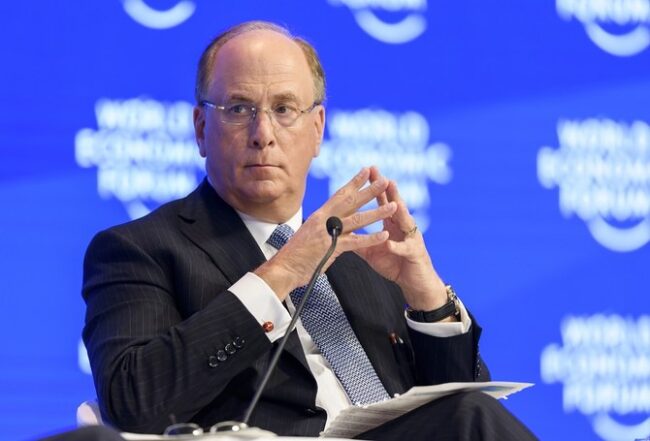
Image: Fabrice Coffrini
Per an article by Joe Popularis, “Despite BlackRock passively investing for most clients, it wields immense power — both over the companies whose shares it holds, and through them over the American economy. This is because, even though BlackRock is not the ultimate owner of the shares it manages, it can vote those shares on behalf of its clients. That tremendous voting power enables BlackRock to exert extraordinary influence over corporate management and policy.”
Effectively, Yamaha is in an unwinnable position. Either they buck ESG, immediately losing millions in shareholder capital, access to favorable lending, and enter the crosshairs of weaponized federal bureaucracies; or they adopt ESG and all of its austerities; completely restructure their product line and manufacturing processes; and try to weather the oncoming storms of a hemorrhaging global market with the hopes that folks can still purchase a boat or WaveRunner…
…which seems unlikely since the World Economic Forum, whose architect and close personal friend of Larry Fink, Klaus Schwab famously promised that by 2030, “[we] will own nothing and [we] will be happy.”


